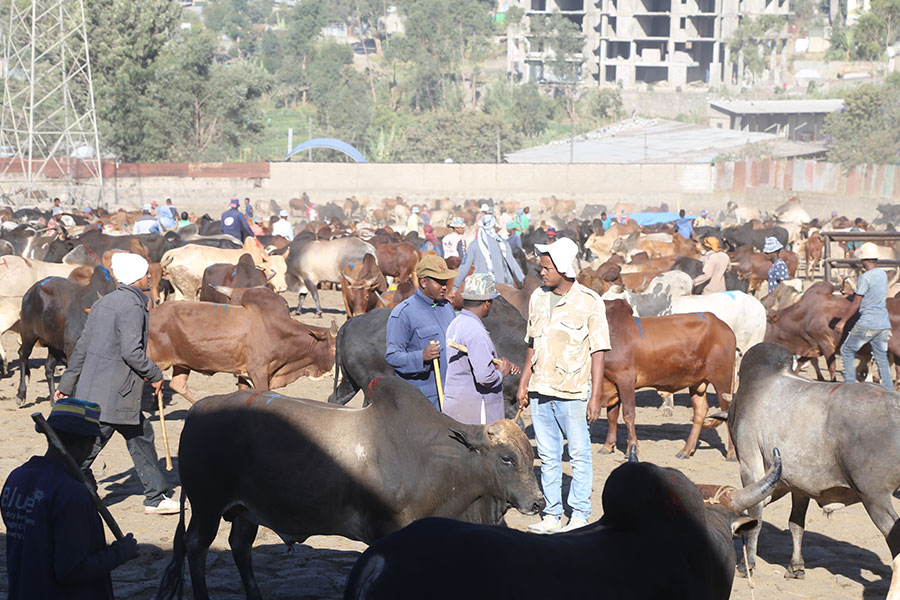
Fortune News | Nov 07,2020
A ship carrying half a million quintals of urea arrived at the Djibouti ports last week. The amount accounts for nearly five percent of the total fertilizer imports scheduled for the year, while the total import stands at 3.48 million qtls.
According to the Ethiopian Agricultural Works Corporation, the shipment is the first round of urea imports, as previous shipments were of different types, such as NPS and NPS boron.
The Corporation has been the sole importer of fertilizer since 2015 and bases the amount on demand estimates forwarded from the Ministry of Agriculture. It plans to import five million quintals of urea for the harvest season, with NPS, a compound fertilizer which has garnered increasing use over the years, taking the rest of the quota. The shipments from Egypt, UAE and Morocco account for most of the imports.
According to Gashaw Aychiluhm, communications director, close to 12.8 million qtls have already been purchased, with a little over half distributed to farmer unions.
The World Bank estimates that fertilizer use in Ethiopia averages a little over 36Kgs per hectare, with agricultural land accounting for 34pc of the national land mass.
Most farmers in the Amhara Regional State receive fertilizer through cash and credit schemes facilitated by Tsedey Bank, which works in partnership with the Commercial Bank of Ethiopia (CBE).
The Regional Director, Yirga Getnet, said their Bank is merely fulfilling its corporate social responsibility in providing these services. The former Amhara Credit & Saving Institution transformed into a full-fledged bank and started operation four months ago, after 26 years of service as a microfinance institution boasting 12 million customers and 46 billion Br in assets.
According to Yirga, most farmers pay back the loans with 17pc interest rate within nine months.
Walta Farmers Union has 32 farming cooperatives with close to 20,000 smallholder farms under its fleet. The Manager, Welde Teferi, confirmed the Union had received about 8,000qtls. Although it is too early to predict, Walta does not foresee a supply shortage compared to last year.
The fertilizer is distributed to farmers on credit-based auction, with the amount and prices set after full distribution.
"It'll be calculated following the bidding process," said Welde.
Data from the central bank indicates the cost of fertilizer imports in the fourth quarter of 2022 surged by 229pc, amounting to 870 million dollars. Headline inflation had also increased to 9.5pc during the same period.
The price of a quintal of fertilizer had shot up by as much as 80pc last year following the war between Russia and Ukraine. The incident created deadlocks in shipping corridors that complicated global supply chains.
The delivery is better this season for Merkeb Farmers Union in Amhara Regional State, which has already received over 106,000qtl of NPS.
Getachew Eshetu, vice president of the Union, with more than 300,000 households under its umbrella.
"There is a significant improvement," he told Fortune.
He shares the same sentiment as his peer, reasoning that unless unforeseeable circumstances arise, no shortage can be forecasted as it has arrived earlier than anticipated.
Siraj Abdulahi, deputy head at Ethiopian Shipping & Logistics, attributes the early arrival to the early purchase and globally less complicated logistics networks.
"The global pandemic was less taxing this year," said Siraj.
He believes transporting the entire purchase at once would be impractical, hence on-demand periodical shipments in accordance with their Agroecology. Farmers who cultivate summer wheat receive fertilizers first, followed by areas who cultivate in spring, and finally reaching to winter cultivators.
The World Food Program (WFP) estimated in October that around 20 million people in Ethiopia need food assistance, rendering the agricultural sector's productivity extremely vital.
Transition into an industrial economy is unthinkable without a highly productive agricultural sector, according to Shimels Araya (PhD). The agricultural economist ascribes the low productivity of the agricultural sector, which accounts for 80pc of national exports, to be arising from a failure to absorb technology sufficiently.
He is an agriculture and development economist who underscores the importance of incorporating technology into the sector in any form. He explains fertilizers are considered a chemical technology and considers environmental sustainability concerns secondary for the country.
"The poor don't have the luxury to think long-term," he told Fortune.
PUBLISHED ON
[ VOL
, NO
]

Fortune News | Nov 07,2020

Fortune News | May 06,2023

Radar | Oct 31,2020

Commentaries | Nov 14,2020

Radar | Jun 11,2022

Viewpoints | Jun 17,2023

Radar | Dec 12,2020

Radar | Dec 04,2022

Radar | Apr 30,2021

Agenda | Jan 06,2019

Dec 22 , 2024 . By TIZITA SHEWAFERAW
Charged with transforming colossal state-owned enterprises into modern and competitiv...

Aug 18 , 2024 . By AKSAH ITALO
Although predictable Yonas Zerihun's job in the ride-hailing service is not immune to...

Jul 28 , 2024 . By TIZITA SHEWAFERAW
Unhabitual, perhaps too many, Samuel Gebreyohannes, 38, used to occasionally enjoy a couple of beers at breakfast. However, he recently swit...

Jul 13 , 2024 . By AKSAH ITALO
Investors who rely on tractors, trucks, and field vehicles for commuting, transporting commodities, and f...

Jul 12 , 2025
Political leaders and their policy advisors often promise great leaps forward, yet th...

Jul 5 , 2025
Six years ago, Ethiopia was the darling of international liberal commentators. A year...

Jun 28 , 2025
Meseret Damtie, the assertive auditor general, has never been shy about naming names...

Jun 21 , 2025
A well-worn adage says, “Budget is not destiny, but it is direction.” Examining t...